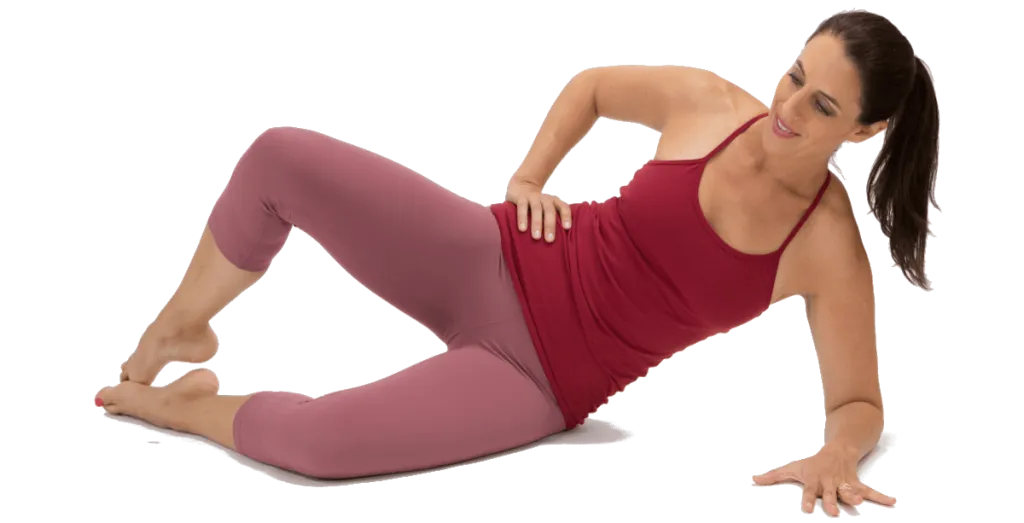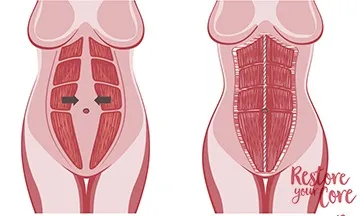Learn

Hi! I'm Lauren.
Nice to meet you
Lauren Ohayon is the creator of Restore Your Core® (RYC®), a comprehensive and sustainable whole-body fitness program that empowers women to achieve ideal pelvic floor / core function and be strong, long, mobile and functional.
Top articles
Before and After: Diastasis Recti
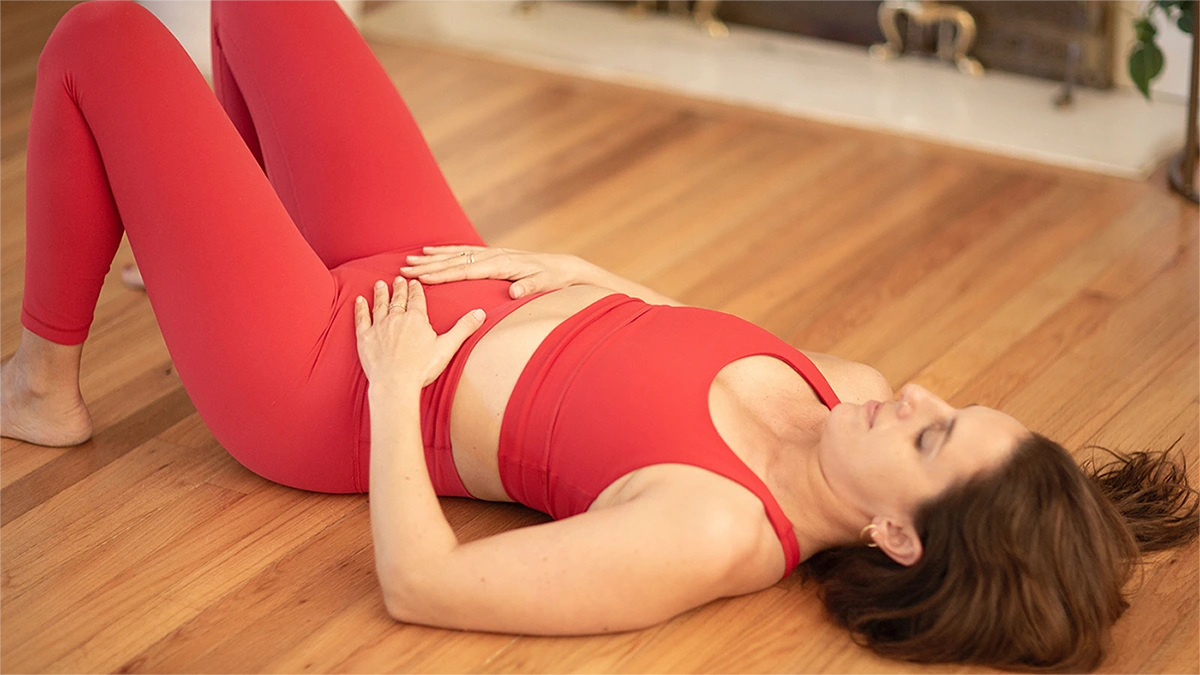
Diastasis recti is a complex injury which depends on time and personal dedication to heal. The results of the healing process are convoluted at times. Many programs and health “experts” try to lure you into their flat belly programs and value looks over functionality.
Understanding that a healthy body does not necessarily equate to a toned, slim, and sexy body is the best mentality when approaching your healing process. In this article I will attempt to answer any questions you have regarding before and after diastasis recti while also kicking culturally fueled health tips to the curb.
Table of Contents
What is diastasis recti?
Diastasis recti is the stretching or separation of the rectus abdominis (6 pack) muscles caused by the thinning of the linea alba (midline connective tissue). Diastasis recti separation leaves your abdominal organs unsupported, and if severe, can expose your digestive organs creating a stomach bulge.

This separation can range from being isolated above the belly button, within the belly button, and below the belly button sitting above the pubic bone. In some cases, the separation encompasses the entire mid section of the core.
Before and After: Diastasis Recti
I hate before and after pics. The truth is: they are a sham and they don’t really tell the real story. They do not encourage us to be healthy long term and they breed a false ideal of how you should look and feel. How you look IS NOT an indicator of health!
Get free expert advice and start your Diastasis Recti healing journey today
Lies Of Before & After Culture
Before & After Measures Progress Based on Looks
How you look has nothing to do with how healthy you are. Many athletes and bodybuilders have constant back, shoulder, core issues and pain despite their healthy and toned appearance. In many cases, athletes and bodybuilders have a diastasis recti without even realizing it! Buying into an appearance based program only damages any attempts at building a stronger and more functional core and balanced body. You can still have a belly and be healthy with a functional, strong core.
How You Look is Measured by How Fit You Are
Fit does not equal health. Being fit, just like having a slim and flat belly, does not make you pain or injury free. Having abs that are too tight, taught, and tense can go hand in hand with lower back pain, incontinence, painful sex, and even the development of a diastasis recti. A toned core does not mean a healthy core.
Sculpted arms and shoulders can accompany shoulder injuries and pain. A tight butt can go hand in hand with incontinence, painful sex, and back pain as well! Just because you have the tightest body or are sculpted like a Greecan goddess does not mean that you are free from painful injuries or have a healthy body. An appropriate before and after mentality encourages function–ridding yourself of injuries, pain, struggles, and weariness–and focuses on building a strong, balanced, supple, and empowered body that makes exercising almost effortless.
Before & After Denies an Opportunity for a Health Journey
Instead, Before and After culture influences us to become victims of fad diets and quick-fix solutions. The reality is: building strength, healing injuries, and becoming more able to accomplish tasks with ease takes time and dedication. Our culture is OBSESSED with Before and After. We shouldn’t be focused on how much we weigh, or how much fat we have, or how flat our bellies are, or how tight our butts are. Instead, we should focus on our wellness as being a way of life. An approach that cannot be measured by Before and After pics.
Take 3 steps toward regaining your ability to do the things you love
Diastasis Recti
Before and after diastasis recti rehab is complex. The mechanism for closure is not a cut and dry approach or result. I have many, many clients who have done Restore Your Core and although they have closed their diastasis recti, they still have a pooch. This can be confusing because many people believe that healing a DR equals flat abs.
Diastasis Recti Before
Before a diastasis recti is healed there can be a whole host of bodily function issues. Rectus abdominis separation can lead to a stomach bulge (aka stomach pooch), pelvic floor issues, unnatural posture, and stomach and back pain. The various symptoms that can accompany a diastasis recti range from:
- Abdominal Bulge
- Abdominal Gaping
- Lower Back Pain
- Sensation of Bloatedness without Bloat
- Incontinence
- Poor Posture
- Constipation & Bloat
- Doming or invagination of the linea alba when performing crunches or other traditional ab exercises
- Difficulty with everyday activities due to a lack of core function.
Before healing takes place, you can be in a very uncomfortable or self-conscious place. If you are facing some of the issues above, it can be quite worrisome. However it is really important to understand that the After is not what appearance culture insists it is. I wish I had a quick-fix solution for diastasis recti, but I do not. The key to dealing with a diastasis recti is effective core training. The whole goal is to train your body to react and respond appropriately to your movement and activities.
Diastasis Recti After

A healthy body with a closed diastasis recti does not equal flat abs or lack of body fat. I never, ever try to sell flat abs with my programs. Some of my clients who are healed are functional but have a belly. With a diastasis recti the entire muscle system of the core is affected. This can also affect digestion which can, in turn, affect other systems. A realistic healing process is one which takes time … and then some more time.
Connective tissue heals super slowly and each body presents itself differently. What works for some may not be a guaranteed approach for others. The confusing part of the healing process is that some women who have a lot more belly fat can close their diastasis recti and the result is a functional and slim belly with flat abs; while some women who have little to no belly fat with a diastasis recti end the program with a functional core, but with a belly.
Discover the top 3 steps to heal your Diastasis Recti and get back to what you love
The After results of a diastasis recti looks like:
- A functional and strong core that aids in your everyday movement
- Having proper core loading strategies that encourage your whole body to take part in healing and getting stronger
- Getting a functional core which includes bettering body alignment, breathing mechanics, and correct training in exercise.
- Possibly diet modification because a diastasis can affect your digestion of certain foods causing an intolerance (I’m not a dietician, so I recommend consulting one if you’re having trouble with various foods).
- Adding more load to your workouts in the form of heavier weights or more advanced movements to get you even stronger and more able.
- And, finally, ditching flat belly culture and embracing a mindset that doesn’t fear movement or hold onto unhealthy expectations of outcomes and results.
Learning how to effectively approach core training is not rocket science. However, it does require a shift in many of us in how we use and think about our bodies. Closing a diastasis recti does not equate to flat abs or a sexy appearance. We are sold into that ideal again and again and it just isn’t fair. How deep the gap – not how wide – determines how long it will take to close a diastasis recti.
Got questions?
Does Diastasis Recti heal on its own?
What exercises should be avoided with Diastasis Recti?
Can you fix Diastasis Recti without surgery?
Yes! There have been many women who have completed the RYC® 12 -Week program and seen their diastasis recti close considerably, if not all the way. It’s not only possible to heal diastasis recti without surgery – in many cases, you can also restore core strength and full-body function without the need for invasive procedures.
Can physical therapy fix Diastasis Recti?
What does Diastasis Recti look like?
Is a Two Finger Gap Diastasis Recti?
What problems can Diastasis Recti cause?
Does belly binding help Diastasis Recti?
Belly binding is thought to help close the Diastasis Recti gap by wrapping a binder around your torso. However, wearing a splint or binder won’t strengthen or tighten the muscles – but it might provide support for lower back pain and other issues related to pregnancy (or postpartum) and be an appropriate tool in the later stages of pregnancy and early weeks postpartum.
Is running OK with Diastasis Recti?
Is it belly fat or Diastasis Recti?
Does drinking water help Diastasis Recti?
Is Diastasis Recti a hernia?
Diastasis Recti, is not a Hernia. Clinically, a Diastasis can look like an Inguinal or Umbilical Hernia when flexing your abdomen; you may notice a bulge near the belly button.
Why does my stomach dip in the middle?
Can Diastasis Recti cause digestive issues?
Top articles
“There is no thank you big enough for Lauren Ohayon existing and thinking and helping so many of us. Every time I do something I never thought I’d do again she is part of the reason why.”
Laura Gregg
Learn 3 ways to heal your Diastasis Recti
in this FREE video and get the support you deserve
*10K+ women healed and healing

Thank you!
Your FREE video is on the way
Please check your email inbox in a few minutes.
Related articles
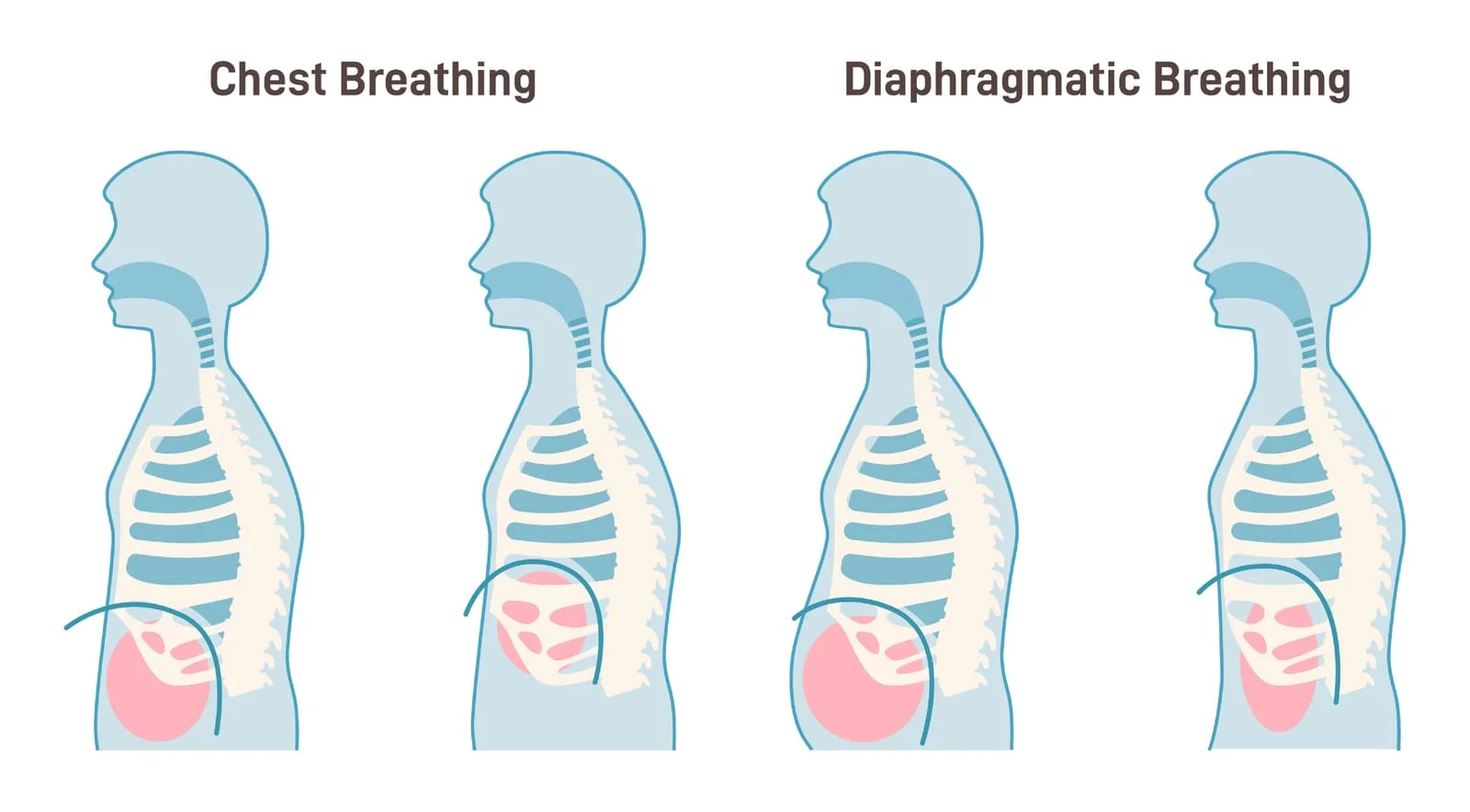
If you have diastasis recti (DR), you may notice a change in your breathing patterns or even experience shortness of breath. The connection between breathing and diastasis recti is significant...

Having a flat stomach with Diastasis Recti is a topic that comes up almost every week in the form of an email or a post in my Restore Your Core®...
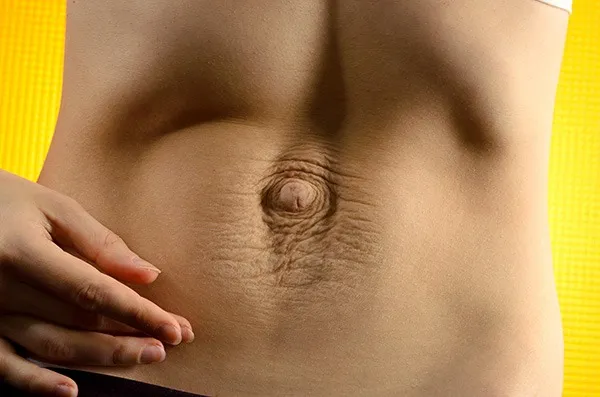
Healthcare professionals–including doctors, coaches, and doulas–have you been confused about how to help your patients and clients with diastasis recti? Is surgery the best and only option? Not necessarily. Read...
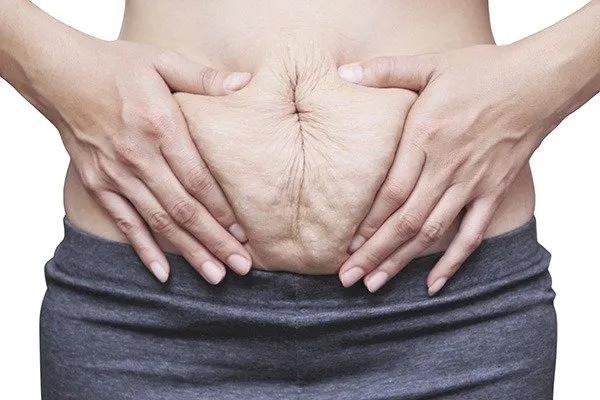
While it’s relatively easy to assess yourself for diastasis recti, what do you do about it? PT is great; pressing play on a video at home is even easier. Read...

If you’ve recently discovered that you have a diastasis recti, you might be wondering whether you can keep up your regular workout routine. With the right information, you can safely...

If you’ve been diagnosed with diastasis recti (DR), figuring out how to keep moving without making things worse is a challenge. Thankfully, DR is very responsive to targeted exercise. When...
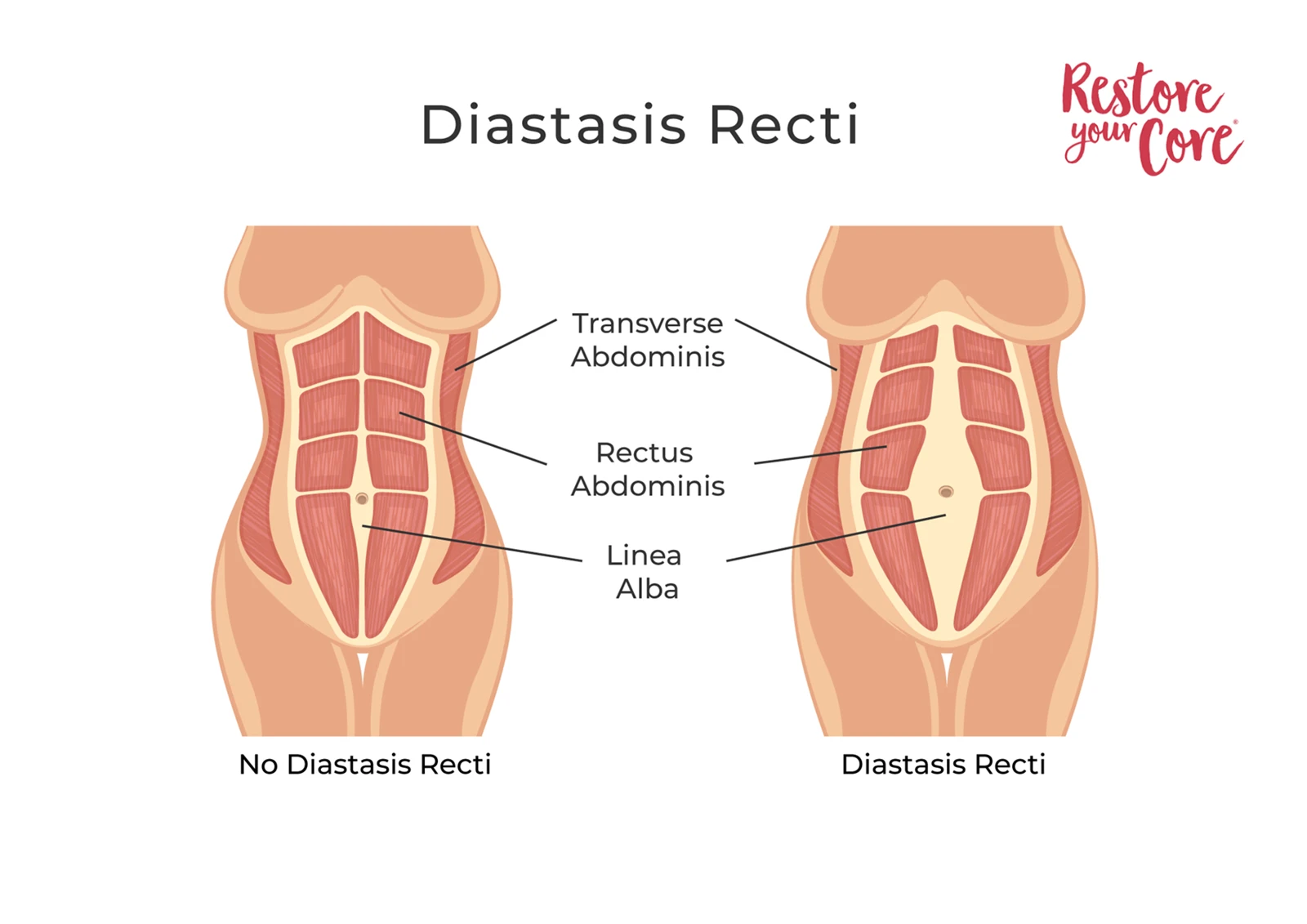
Although many people think of it as a postpartum healing problem, diastasis recti is not a strictly postpartum issue. Read on to learn how to effectively address and heal diastasis...

Diastasis recti is a complicated injury. Some people will go through rehab fully dedicated to restoring their core function and still have a gap. The truth is: diastasis recti is...

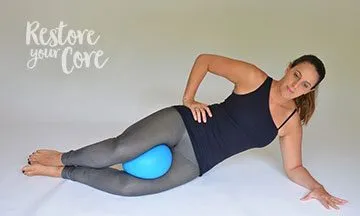
Diastasis recti is a common condition that can occur during pregnancy and even extend postpartum. DR affects women and men in different ways and during different stages of their lives....
Discover the top 3 steps to heal your Diastasis Recti and get back to what you love
Get more actionable info, inspiration and exclusive offers delivered to your inbox.
*No spam, just quality content and support
Thanks for subscribing!
inbox soon.
Thanks for subscribing!
Please check your inbox soon.



